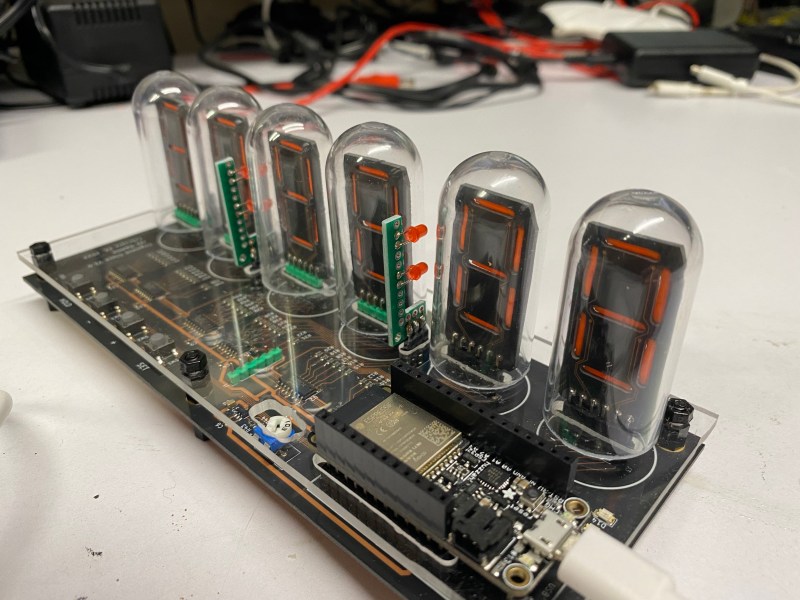We love clock projects here at Hackaday, and we’ve seen many beautiful designs based on a wide variety of display technologies. There are various types of glass tubes like Nixies, Numitrons and classic VFD displays, all of which have that warm “retro” glow to them. Then there’s LEDs, which are useful for making cool pixel-based timepieces and easy to drive with low-voltage electronics. So how about combining the best of both worlds, by using LEDs to make a Numitron-like display? That’s exactly what [Jay Hamlin] did when he built a digital clock based on LED filaments.
The heart of the project consists of orange LED filaments similar to the ones used in vintage-style LED light bulbs. [Jay] bought a bunch of them online and tried various ways of combining them into seven-segment displays, eventually settling on a small PCB with a black finish to give good contrast between the LEDs and the background. To make the displays look like they’re encased in glass, [Jay] bought a set of plastic test tubes and cut them to size.
The base of the clock is formed by a slick black PCB that holds an ESP32. The segments are driven through a set of 74LV595 shift registers to keep the required number of GPIOs to a minimum. There are no buttons: thanks to a WiFi connection and the Network Time Protocol the ESP32 automatically keeps the correct time.
The end result looks remarkably like a Numitron display at first glance, and remains a beautifully-made clock even if you notice that there’s no glass to be found. If you’re into LED filament clocks (and who isn’t?), check out this analog wall clock, or this spiderweb-like digital clock.
















Beautiful! Very well done.
may i suggest using the back side of the pcb as the front. it gives a cleaner appearance of the edges of the segments and sharper defined bars. the header image shows what i mean.
The contrast between lit and unlit segments could probably be made much better by tinting the tubes, and I don’t think it would detract at all from the project because I’ve seen tinted filament displays. I would try red or “smoke” taillight spray that “those darn kids” use on their cars (I’ve used this also on 35+ year old taillights that have red and yellow fade, BTW). Ideally, the tint would be on the inside but that may prove to be impossible to do.
I tried it both ways. Just plug the digit in backwards and set the REVERSE_VIEW flag in the firmware and it will flip the numbers.
Great job. It looks great, and it’s very clever of you to have already thought of this. Thanks very much for sharing.
Love it. Are you building any to sell?
Maybe paint the left and right side of each LED segment black, to prevent then from making the other leds glows from reflected light. Or tint the tubes a redish color.
It’s been many decades since I set down my soldering iron in favor of programming computers. But this makes me want to pick up the soldering iron again. Very cool!
This is really great. Can you make some copies of the main circuit board to sell, with or without the other components? I would be very interested in buying one.